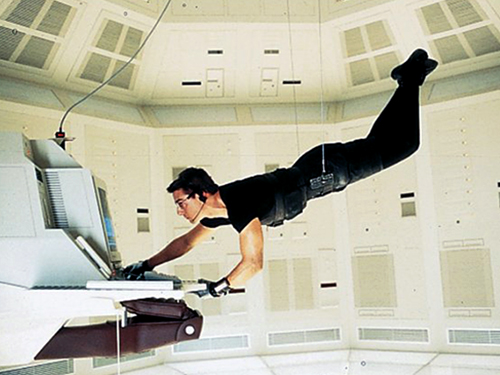
“I’ve always had the inverse quote to Godard: film lies 24 times a second. And anybody that’s used to using moving images like a film director, when we see stuff on TV, it’s all positioning and public relations, there’s not an ounce of truth to any of it. I always look behind the image and say, ‘why are we seeing children with flies on their eyes this week?’ Those images are always out there. Like the war in Iraq. If you think Americans are ignorant, it’s because we’re not seeing anything. We’re constantly being manipulated by images. They’re lying to us all the time. We have no idea what we’re doing!”
Brian De Palma
“De Palma’s oeuvre – often described with the saying “De Palma’s cinema is about cinema” – presents itself as a Hitchcockian parody, without the one-sidedly ironical sense of derision of the original. De Palma peruses and remoulds the English Master. In Daney’s optic, this technique allowed De Palma to expose features which Hitchcock could reveal only implicitly: De Palma’s cinema is an exercise in the shelling, divulging and alluding of the purely schematic workings of cinema itself. Tensions which have always been inherent to the cinematographic profession are accentuated even more strongly in De Palma: distance and proximity, exhibitionism and voyeurism, egoism and empathy; the eternal oppositions of the oeuvre. With De Palma, the spectator remains a perennial outsider.”
Anton Jäger and Jan Saelens1
“Just like how Hitchcock presupposes a “Hitchcockian” audience, de Palma presupposes an audience that perfectly understands Hitchcock. Even deeper than this, what interests me about De Palma is how he works on the image. To only say it once – and which makes him a modern filmmaker – de Palma knows that the image is no longer pure. In the same way that he shows us this young girl who looks like a virgin just to brutally change our perception of her by showing her as a prostitute. Nobody is no longer that pure, especially the image. He will then show how corrupted images have gotten: by showing us whole-heartedly what is “clean”, the normal American, this absolute desire for cleanliness will lead to the worst explosions of messiness and chaos. [...]
His films have a publicity photograph look - they are very clean. But at the same time, they contain this idea that, while acknowledging this, images still do have an explosive quality and which is inevitable – the explosion. The more that they get codified, stereotyped, made to look like publicity; more trouble will brew under the surface until it explodes.”
Jean Douchet2
- 1Anton Jäger and Jan Saelens, “The Neon Demon, a Panting Oracle”, Sabzian, 2017
- 2Discussion between Jean Douchet, Pascal Bonitzer and Serge Daney, Cahiers du Cinema, 1981

